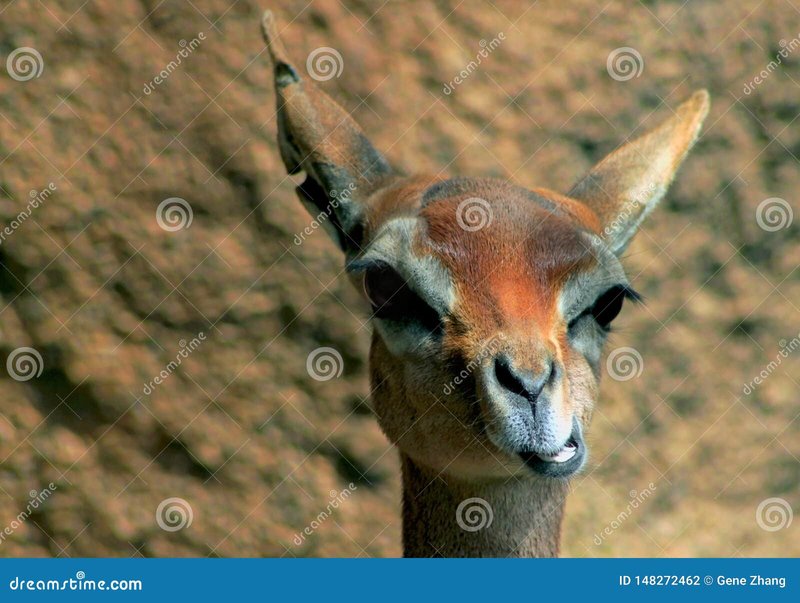
The gerenuk, native to East Africa, has a unique appearance with its slender body and elongated neck, which helps it reach leaves high up in trees. Imagine a gazelle that decided to stretch its neck out like a giraffe—it’s a sight to behold! But while they seem gentle and charming, let’s dive into whether they truly can be dangerous to us humans.
Understanding the Gerenuk’s Behavior
Gerenuks are generally shy and skittish animals. They prefer to avoid confrontation and are more likely to flee from humans than engage. Their primary defense mechanism is their speed and agility. When startled, they can leap away in incredible bounds, seeking safety in the bushes. This flight response means they rarely pose a danger; after all, they’d rather disappear than fight.
However, as with many animals, their behavior can change under stress or threat. If cornered or injured, a gerenuk might react defensively. Imagine being in a crowded space and feeling trapped; you’d probably react in a way you wouldn’t normally. Similarly, a frightened gerenuk could kick or charge if it feels there’s no escape.
When Do Gerenuks Become Aggressive?
You might be thinking, “Can they really be aggressive?” The truth is, aggression in gerenuks is quite rare. These animals are herbivores, primarily feeding on leaves and fruit. Their calm demeanor is part of what makes them so endearing. However, aggression can sometimes arise during mating season when males are more territorial.
In these situations, male gerenuks may fight each other for the attention of females. They use their long necks and sharp horns in these contests, which can look fierce but are part of their natural behavior. While they could pose a danger to each other, this doesn’t typically translate to aggression toward humans—unless, of course, someone gets too close to their territory!
Human Interactions and Their Risks
Most interactions between humans and gerenuks happen in wildlife reserves or parks where these animals thrive in their natural habitats. Observing them can be quite a treat, but there’s always a chance of a misunderstanding. For instance, if you’re on foot near a gerenuk, it’s essential to keep your distance. As mentioned earlier, they might feel trapped and react unpredictably.
It’s crucial to remember that feeding or trying to touch wild animals, including gerenuks, is never a good idea. Not only does this put you at risk, but it can also stress the animal out. Imagine a stranger trying to feed you at your dinner table—it would be pretty uncomfortable, right? So, giving them space ensures a peaceful coexistence.
What Role Do Gerenuks Play in Their Ecosystem?
Gerenuks contribute significantly to their ecosystems. They help control vegetation by browsing on shrubs and trees, which can prevent overgrowth. Think of them as nature’s landscapers! By keeping certain plants in check, they create space for other species and help maintain biodiversity.
Additionally, as prey for larger predators, they play a role in the food chain, supporting the ecosystem’s balance. In this regard, they’re less of a threat to humans and more of a vital piece of the natural puzzle. If you enjoy wildlife watching, spotting a gerenuk can be a delightful experience that connects you to nature.
Conservation Status of Gerenuks
As beautiful as they are, gerenuks face threats from habitat loss and hunting. Their populations have declined, and they are classified as vulnerable by conservation organizations. This status highlights the importance of protecting their habitats, which in turn protects them from potential danger and allows us to enjoy observing them in the wild.
Organizations dedicated to wildlife conservation are working tirelessly to ensure these incredible creatures continue to thrive in their natural environments. Supporting these initiatives can help prevent further decline and ensure that future generations can appreciate these unique animals.
So, can the gerenuk be dangerous to humans? In most situations, the answer is a resounding no. They’re shy, gentle creatures that prefer to avoid human interaction. While there may be rare instances of defensive behavior, these are typically situations of stress, not malice.
Understanding and respecting their space can lead to enriching experiences with these remarkable animals. Next time you hear about the gerenuk, remember that while they may not pose a danger to us, their role in the ecosystem is vital, making them a species worth protecting and admiring from a safe distance.

